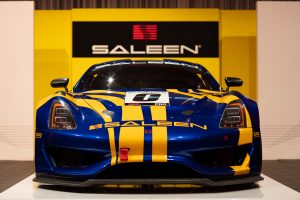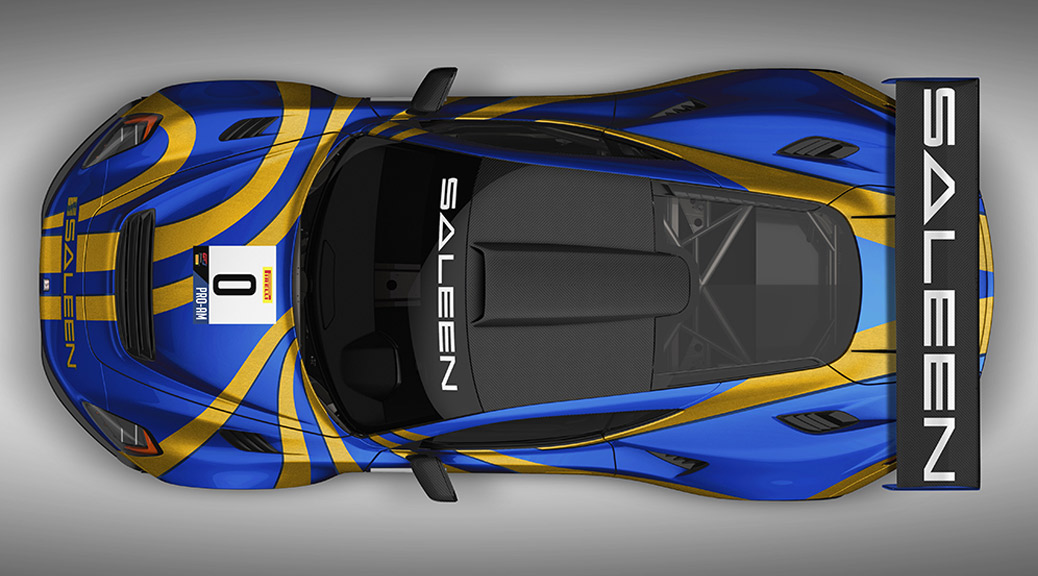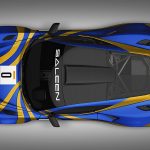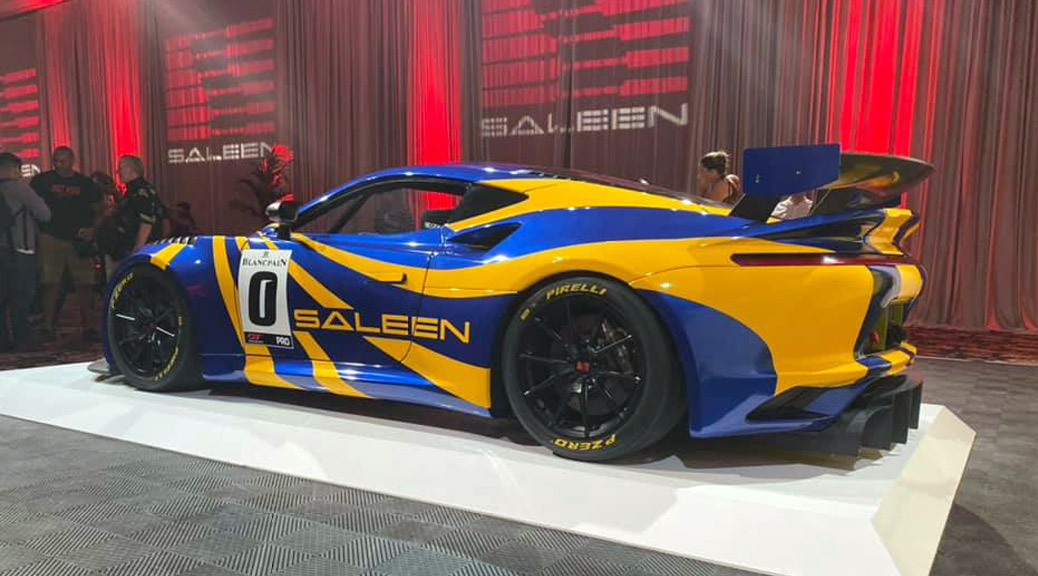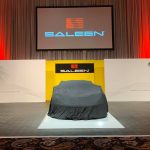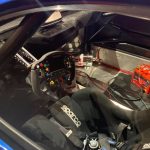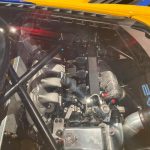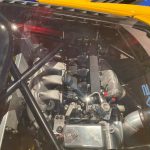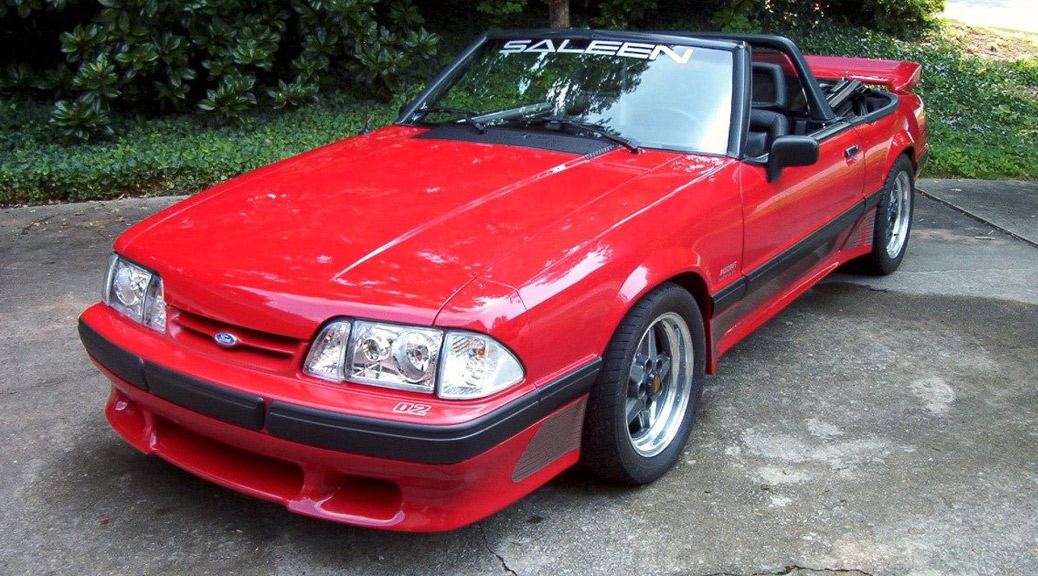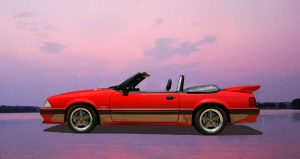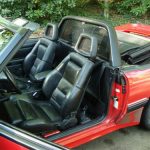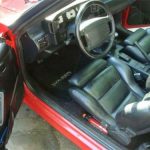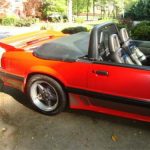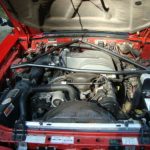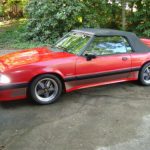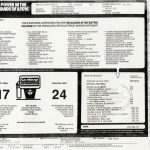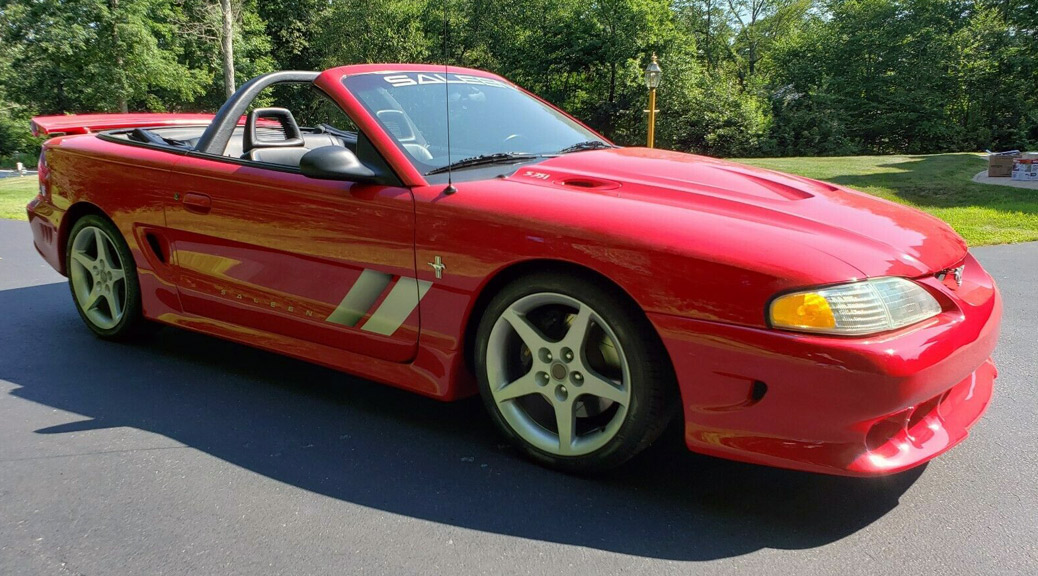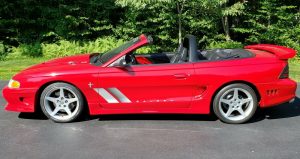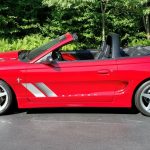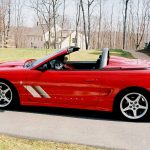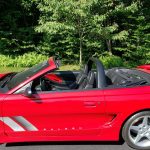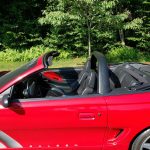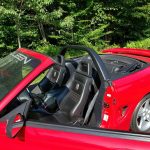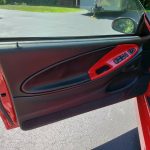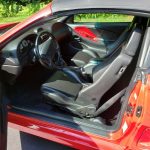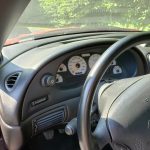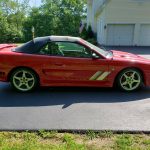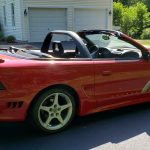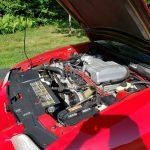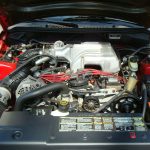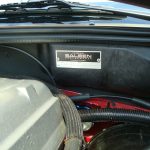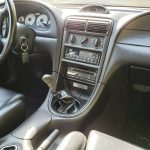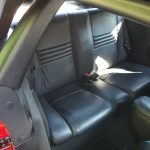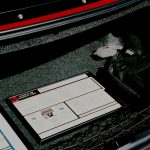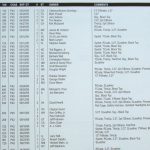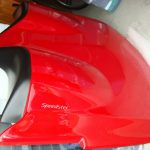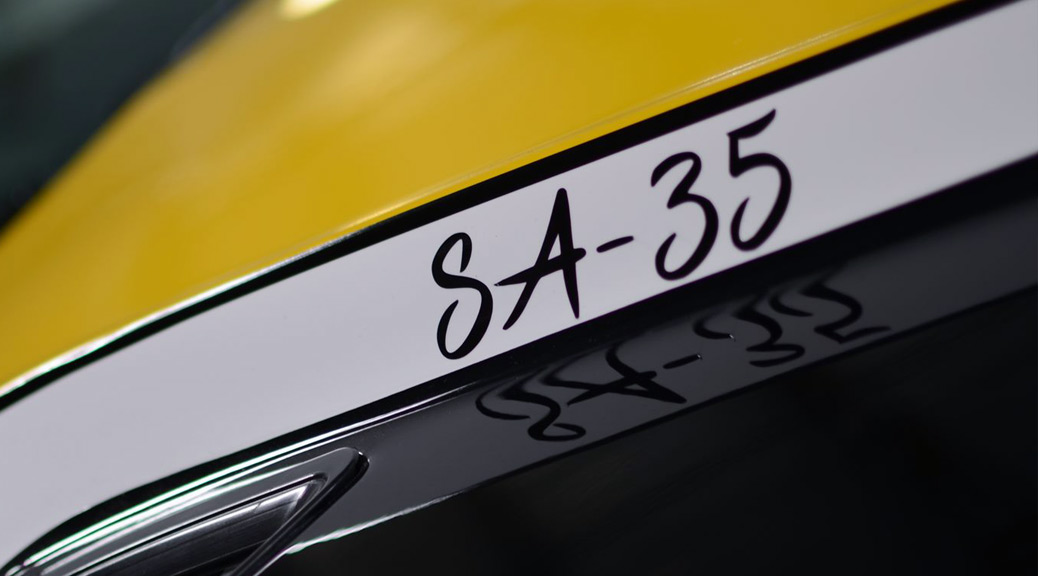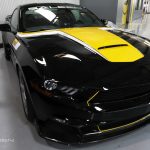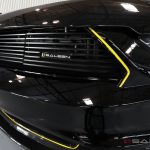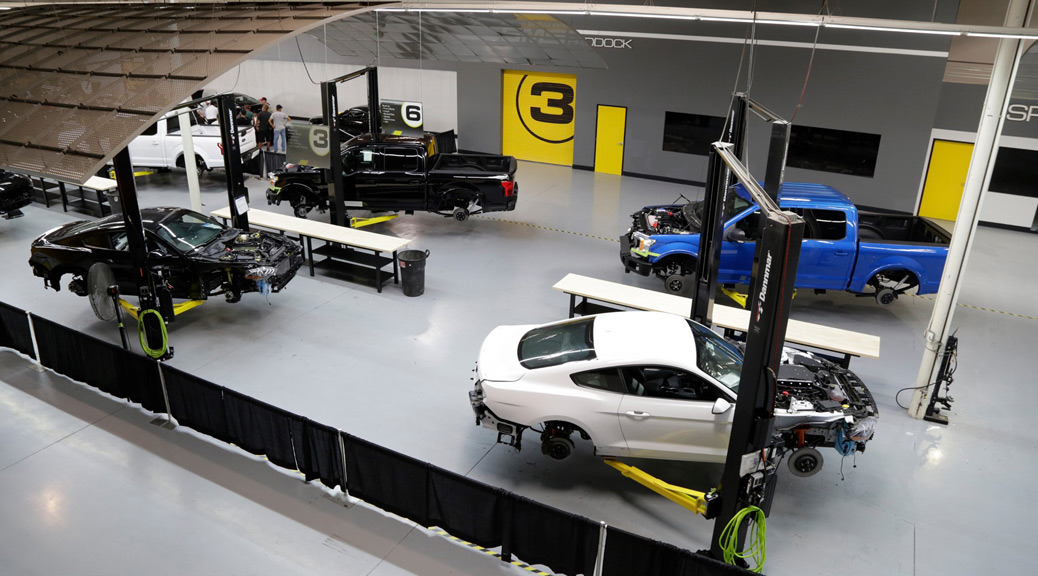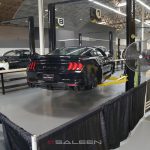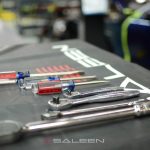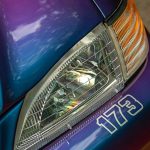A Saleen Mustang Collection to Die For
Power in the Hands of… One?
BY: MARYBETH KICZENSKI on OCTOBER 2, 2019
Original Article: HOTROD.COM

We’ll wager a bet that you’ve heard the name Steve Saleen, and we’ll bet the farm that every Mustang enthusiast knows the name, as the builder of the infamous Saleen Mustangs. Coming from a Formula Atlantic open-wheel racing background, Saleen began turning out modified Fox-body Mustangs in the 1980s, from 1984 to 1993. Roughly 2,700 of the Saleen Mustangs were built during the Fox era, and a bunch more from ’94 to today. The Saleens were among the first “tuner” Mustangs on the market, and with their modified (sometimes Vortech-supercharged) engines and suspensions, they were a bright spot in the often dismal mid-1980s performance scene.
Saleen’s tagline, “Power in the hands of a few,” definitely means a bit more to Scott Warren of Highland Park, Illinois. As an avid Mustang enthusiast, the performance capabilities of the Saleen-modified ones always peaked (piqued) his interest. Scott’s first Mustang was a black-over-grey 1987 GT that would go on to both fuel his addiction to black cars, as well as the quest for a real Saleen.
For Scott, what stood out about the Saleen cars was their track record. Saleen took home the driver, team, and manufacturer’s championships in SCCA Escort Endurance series in both 1987 and Saleen’s winning continued in 1988, including a 1-2-3 in the 24 Hours of Mosport in ’88 with a three-Mustang team, a first for Ford since the GT40 tromping of Ferrari at LeMans in 1966.
Saleen Mustangs are special in that every vehicle is serialized, like Shelbys were and still are. This appealed to Scott, as well. Not only does serializing make each car unique, they also come with a story that can be tracked throughout a car’s history. Scott used this to his advantage in searching out cars from limited-production runs, super high-performance offerings, press cars, test mules, or Saleen’s personal cars—that unique serial number and bumper number tells the story. Scott learned that the cars with low bumper/serial numbers tend to be these special builds or in-house company demos; the ones sold to the public typically begin at number 10 but the numbers also don’t always follow in sequence.
After nearly 20 years from his first encounter with a Saleen Mustang, Scott purchased his first one, a black 1987 convertible. While this car started his journey into actual ownership, it would be the special ones mentioned above that he would ultimately end up with.
While the core of his collection consists of Fox Saleens, his many years of driving and collecting them have led him to appreciate all the body styles. Scott is also an active member of The Saleen Club of America which, as he says, has brought together so many people from across the country who share a passion for Saleen automobiles. Even though the Fox Mustang started it all for Saleen, there are highly desirable variants spanning across various generations of Mustangs, many of which he has in his collection. Let’s take a look at them, shall we?
1993 SC #02

Saleen released its first Mustang in 1984 and to celebrate its five-year anniversary in 1989, produced the Saleen SSC, a special edition of 161 Mustangs with specially modified engines that made 292 hp. The ’89 SSC was the first Saleen to receive full EPA certification. These cars proved popular so in 1990-1993 the model was referred to as the Saleen SC, (for Super Car). The production was skipped in ’92. This car, of which only 26 were built, was designed to showcase how far the Fox platform could be pushed while retaining a warranty, something that’s critically important to anyone purchasing a new car. The production numbers of this top of the line Saleen SC can be broken down like this:
| SALEEN SC PRODUCTION |
| 1990 |
13 |
| 1991 |
9 |
| 1992 |
0 |
| 1993 |
4 |
| TOTAL: |
26 |
All of them, except one, sported unique interiors. They were fitted with unique wheels and a larger diameter exhaust. Engine-wise, Saleen fitted them with a Saleen-specific intake and other engine parts. Some received adjustable suspension bits, and some later models were Vortech-supercharged. In 1990, the SC cars were rated at 315 hp, which was a lot of power for the early ’90s. Saleen offered the package for 1992, but there were no takers. For 1993, four cars were ordered. Of these cars, one was a convertible. What makes this batch special is that they came with a 450hp rating. These cars were identical in performance to the SA-10 models except for paint scheme and interior seat stitching. The ’93 SC cars even had the carbon hood originally offered on the SA-10. Scott’s ’93-’02 SC is the lone hatchback produced with this 450hp combination. What does this equate to in performance numbers? Off the showroom floor the car would bolt 0-60 in 4.8 seconds and cover the quarter mile in 12.9 seconds. Again, for the early ’90s that was fast!
Scott’s 1993 #02SC originally stickered for $39,990 and was used as a daily driver during the first part of its life, where it was traded between collectors. Later it spent several years on display at Performance Autosport in Richmond, VA. Scott was adamant about telling his friend there how much he loved that particular car and this communication proved beneficial when the car came up for sale a few years back. Scott was able to scoop it up with 54,000 original miles.
1993 SA10 #01

The Fox-body Mustang came to an end in 1993 which coincidently was also Saleen’s 10th year of production. To celebrate, the company decided to offer the SA10 model. In order to purchase one of these special edition cars, you had to be a member of the Saleen Owners and Enthusiasts Club. What makes the SA10 models special was that these were the first cars to use sequential serial numbers from Ford. All 10 of the black LX hatchbacks came off the line in order and were shipped to Saleen for the conversion. Exterior wise, the black cars were marked with yellow and white accent decals, a carbon fiber hood, and flat-lipped Stern wheels. Scott notes that these wheels are often copied, and stresses that only 10 or 11 Saleens ever came with them. Interior wise, all but one car received Recaro leather seating. From this point, the customer could pick and choose his/her vehicle’s options from the Saleen Performance Parts catalogue and as such, no two cars are exactly the same. The SA10’s base car, a supercharged Saleen but not an SC, came with 325 hp. Obviously, based on which additional performance goodies were ordered, the car could leave with 450 hp. Less than 10 Fox-body Saleen Mustangs with 450 hp were ever produced—four were the Saleen SC flavor, and the remainder were the SA10 cars.
SA10 #01 was originally built for John McCauley, President of the Saleen Owners and Enthusiasts Club. Like all original purchasers of these special cars, John met with Saleen to discuss the additional details of the build. John enjoyed racing so he wanted this to be a race car. While some collectors would frown upon this decision, others would applaud it—after all, these cars were born from a racing heritage. SA10 #01’s performance story began with a balanced and blueprinted engine fitted with ported cylinder heads. This is the only SA10 with a Saleen-specific intake for more horsepower. From there, a Tremec five-speed and a 3.55 gear with an Auburn differential transferred that horsepower to the ground via heavy duty racing springs and shocks at all four corners. Interior wise, John had the rear seat deleted, and a four-point roll cage installed. A custom Pioneer stereo with a 10-disc changer rounded out the build because, you know, street car! Because of the racing intent for this particular SA10, it would become the most-optioned build, and was built by Joe Gosinski and his team at Saleen. Joe, for those not up to speed on Saleen history, was the man behind the infamous 1994-1999 S-351R but met a tragic end a few years ago—more on that later.
Being the first prototype build, SA10 #01 has a few other details that make it different from the reminder of the SA10s. The graphics are slightly different and the wheels have unique polished center caps. The car also spent time on the show circuit, including being Vortech’s booth car at SEMA. What was the original cost for this special Saleen? MSRP was over $50,000 for this race-ready Fox. Gosinsky would later open Chicane Motorsports in California, A subsequent owner of #01 took the car to Joe’s shop where he refreshed the entire drivetrain and brought the car back to collector-original quality. Scott eventually purchased the car from Mark LaMaskin who owns Performance Autosport in Richmond VA (and helped us with some technical information on this story). The car had been in the Roger Rodas’ collection. Roger was a good friend and client of Mark’s, after Roger’s death Mark helped the family place all of his collectable Mustangs. The SA10s, due to their storied history and performance prowess, firmly place them as one of the most sought-after Fox-body Mustangs. Of the 10 offered, only nine were ultimately built due to a customer backing out on the deal. This car is one of Scott’s most prized possessions, the other being the aforementioned legendary S-351.
The Non-Saleen: 1993 SAAC MKII #01 Convertible

Scott may be a die-hard Saleen owner but that doesn’t limit him from appreciating special cars built by other notable builders. Carroll Shelby, as everyone knows, made history with some of the most incredible Mustangs ever to grace the planet. The SAAC MKI and MK2 cars of the early 1990s have an interesting history due to the fact Shelby was under contract with Chrysler at the time, building the crazy pocket rockets for Dodge. This project was a secret between a few Ford engineers and Shelby, so secret that the first few cars were built in the garage of one of the original people involved in the program. Production was eventually moved to Watson Engineering in MI. Scott’s car was the last one built, and it was assembled at Kar Kraft (home of the Boss 429 Mustangs). The goal was to create a modern day G.T. 350 and they almost pulled it off, but right around the launch of the MK1, Chrysler issued a cease and desist order against Shelby. The cars were quickly rebranded as SAAC (Shelby American Automobile Club) instead of Shelby. Production-wise, 37 white-with-blue-stripes MK1 cars were built. MK2s saw a mix of hatchbacks and convertibles and the colors were expanded to include red and black. Out of the approximate 21 cars made, 12 were convertibles.
The MK cars came with nearly 300 naturally-aspirated horsepower with the GT40 package that consisted of different heads, larger throttle body, and a tubular GT40 intake. The brakes were upgraded to four-wheel discs and three-piece Simmons wheels finished the look. In order to assist with brake cooling, the fog lights were removed in favor of air ducts. Interestingly enough, some believe that without this secret project the 1993 Cobra would have never happened. Ford sold some back-room parts to get the cars built and also used it as the test bed for EPA certification. Also note the lack of fake air scoops that the GT body had.
Scott’s ownership of this car came through an eBay auction—goes to show that sometimes you really can find awesome things on the site. Sitting at around 10,000 original miles, this drop-top Fox is a wonderful example of this complicated three-way relationship that left a sour taste in one manufacturer’s mouth.
1997 S351 #026R

The “R” designation on any Saleen means something special. The S351 series was built from 1994 until 1999, and these legendary cars were the first ones in which Saleen changed out the entire driveline. There were less than 300 produced throughout the entire production run. Some of these cars started out as basic V6s while others were V8s and after Saleen’s swap, power output ranged from 371 hp on the naturally aspirated models to the 505hp fire-breathing supercharged variants. Again, this is the mid- to late-’90s so that kind of power for a car with a warranty was incredible at the time.
Scott acquired S351 #026R after the untimely murder of Chicane Motorsports owner Joe Gosinski in 2010. The car found its way to Joe’s shop with intentions of being turned into a track car. The customer ran out of money, so Joe acquired it as a personal project. A Maximum Motorsports suspension and Global West subframe connectors were installed just prior to Joe’s untimely passing, so when Scott took possession his job was to reassemble and install the original drivetrain and Tremec six-speed. Currently sitting at 15,000 miles, this was one of four cars built with every available option. Those options were the 10-inch rear wheels, 3.55 rear end, two-point chassis brace, and the Recaro leather interior. All S351s received Alcon brakes as a standard feature in 1997. S351 #026R is Scott’s favorite car to drive on the street. He said that the combination of the chassis and suspension work with the sheer power from the supercharged engine make it an absolute beast. Because of his connection with Joe, this car holds a special place in his heart and he never plans on selling it.
1997 S281 Cobra #173

The Supercharged Extreme Rainbow Cobra Speedster Saleen is a mouthful to describe. It is one of 182 cars built on the Cobra chassis and the only convertible ever painted this color—less than 20 Saleens in total were painted this color. Often confused with Ford’s Mystic, this is a completely different color as BASF was a partner of the Saleen/Allen racing team and manufactured the paint for them.
The story of S281C #173 began as a custom build for a customer in Colorado. He insisted on a white top, and the only way to get one was to order a red car, so this car started life as a red cobra convertible. Why is this significant if the car needs to be repainted? Well, Saleen preferred black cars because then they didn’t have to paint the engine bay. A bill for an additional $4,000 for labor was added to the customer’s build in order to remove the drivetrain to paint the engine bay. With an original sticker price of $58,287 and the additional labor costs, plus $4,286 for the supercharger install, this car topped out at $66,573! The original owner supplied a disposable camera to document the build and some photos are said to show the test-fitting of the Vortech supercharger at Saleen’s production facility but Saleen records show that the car was shipped off to a dealer for the supercharger install.
This was another eBay score for Scott. He came across the auction 12 years ago and immediately called the seller to end it. This was his second Saleen and the one he has owned the longest. As it sits today, the car only has about 4,000 miles on it. With the eye-catching paint and unique build details, the car remains one of the most recognizable Saleens out there.
2011 Black Label #01

With all these rare and special Saleen vehicles, what does Scott drive daily? Why a Saleen, of course! True to his collector roots, this also isn’t just “any old Saleen.” The 2011 Black Label (2011-01BL) that serves daily duty started out as a car for Liz and Steve Saleen to use as a commuter for work. At some point, the car was then used as a test mule for what was going to be “George Follmer” editions. A modified engine in addition to suspension tweaks were installed and tested at the track. The car was then shipped to Charlotte to celebrate the Mustang’s 50th anniversary where Steve Saleen gave test rides in the car on the track. Then in 2014, the Black Label body kit was installed and the car was shipped to China as a marketing tool to help launch the brand there. When the Mustang switched body styles in 2015, Saleen sold it to Scott with 26,000 miles on it. Modern Saleens use a “label” to designate the trim levels: White Labels are base models, Black Label is the top trim, and Yellow Label is a White Label with a supercharger. As a true daily driver, Scott has driven this car to over a dozen states and has taken it to two different Saleen Nationals plus Ponies in the Smokies.
There we have it! A somewhat brief history into Saleen as told through the stories of one dedicated owner and his collection of rare and unique Mustangs!
Factoid
In 1985, Steve Saleen’s secretary miscounted the vehicles produced that year, omitting vehicle number 6. Since 1985, Saleen has had the tradition of not issuing the #6 bumper number on any of its vehicles. And now you know.
[Source: Hot Rod Network]
